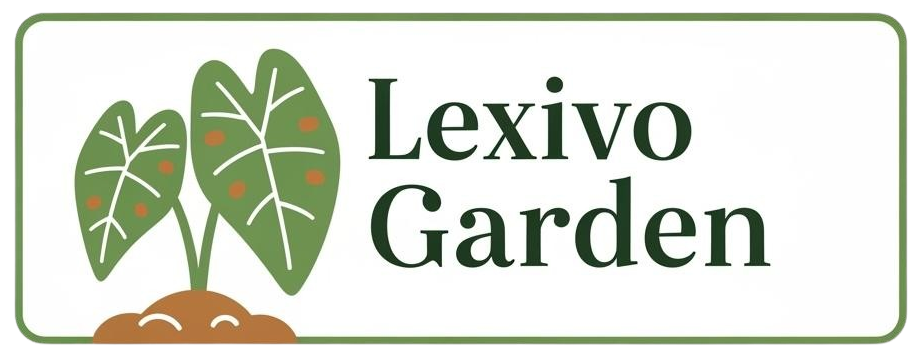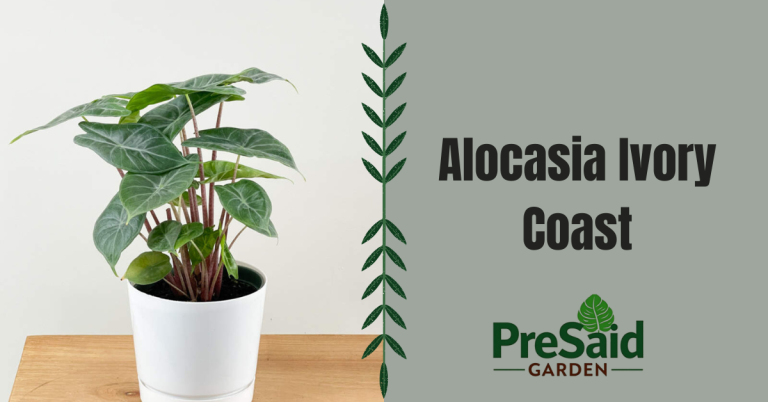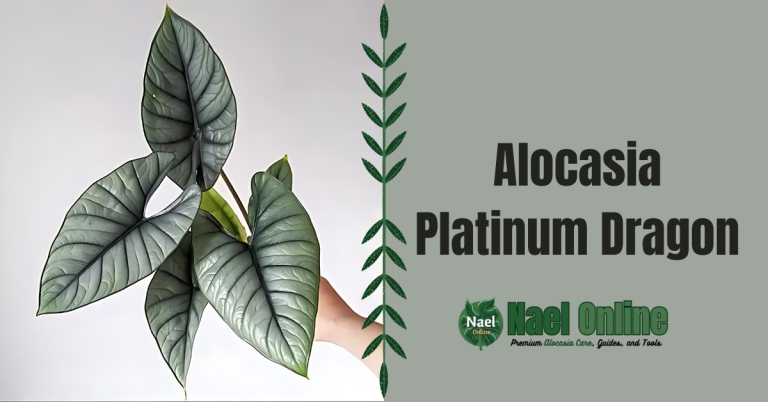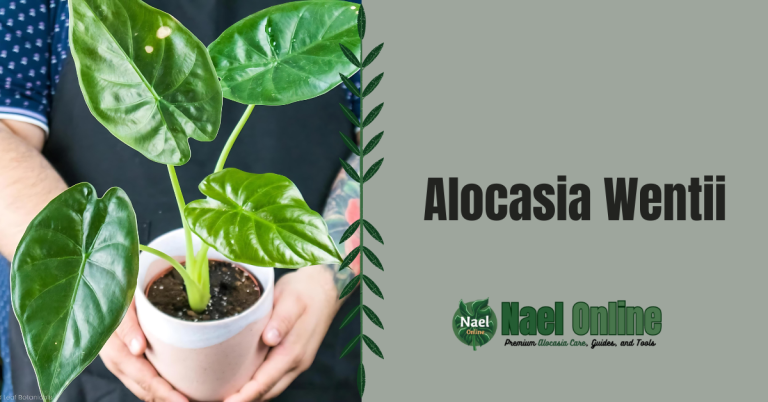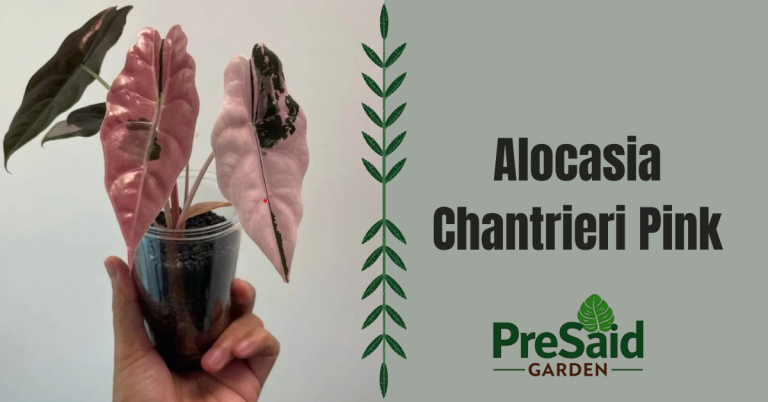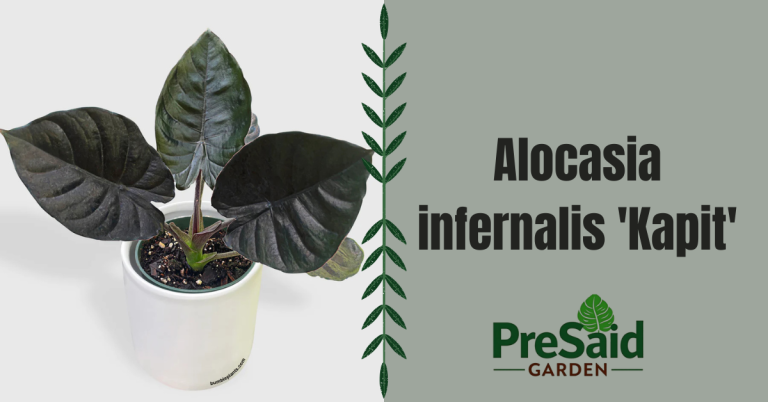Alocasia Tiny Dancer: Care Tips for a Thriving Plant

G’day, plant lovers! Lucas William here, coming at you from sunny New South Wales. I’ve been knee-deep in Alocasias for over a decade now, and let me tell you, the Alocasia tiny dancer is one little beauty that’s got me all excited.
Before we dive into the nitty-gritty of caring for this compact cutie, make sure you’ve got all the gear you need from our shop at https://lexivo.com.ng/shop/. Trust me, you’ll want to be prepared for this little stunner!
What’s All the Fuss About Alocasia Tiny Dancer?
Alright, let’s cut to the chase. The Alocasia tiny dancer is like that friend who’s small in stature but big in personality. This pint-sized plant packs a punch with its striking foliage and compact growth habit. Here’s why plant enthusiasts are going gaga over this little gem:
Key Points to Remember:
- Compact size perfect for small spaces
- Unique arrow-shaped leaves with prominent veins
- Eye-catching silvery-green foliage
- Low maintenance compared to other Alocasias
- Ideal for both beginners and seasoned plant parents
Now, let’s break down the basics of Alocasia tiny dancer care:
| Care Aspect | Requirement |
|---|---|
| Light | Bright, indirect light |
| Water | Keep soil lightly moist, not waterlogged |
| Temperature | 65-80°F (18-27°C) |
| Humidity | Moderate to high (50-70%) |
| Soil | Well-draining, airy mix |
| Fertilizer | Balanced, liquid fertilizer monthly during growing season |
What Exactly is Alocasia Tiny Dancer?
Alocasia tiny dancer is a compact cultivar of the Alocasia genus, known for its petite size and striking foliage. It’s a relatively new addition to the Alocasia family, but it’s quickly becoming a favorite among plant enthusiasts. This little beauty typically grows to about 12-18 inches tall, making it perfect for tabletops, shelves, or as part of a larger plant display.
Origin and History
While the exact origins of Alocasia tiny dancer are a bit murky (plant breeders can be secretive, you know), we do know it’s a cultivar developed from the Alocasia family. These plants are native to tropical and subtropical regions of Asia and Eastern Australia. The tiny dancer variety was likely created to meet the growing demand for compact, eye-catching houseplants that can thrive in smaller spaces.
Common Name:
Alocasia Tiny Dancer, Dwarf Alocasia
Scientific Name:
Alocasia x ‘Tiny Dancer’
Why You Need an Alocasia Tiny Dancer in Your Life
1. Space-saving beauty for small apartments or offices
2. Natural air purifier
3. Unique conversation starter
4. Low maintenance compared to larger Alocasias
5. Adds a tropical vibe to any room
Appearance and Characteristics: Small But Mighty
Don’t let its size fool you – the Alocasia tiny dancer is a real showstopper. Here’s what makes it stand out:
– Arrow-shaped leaves with prominent veins
– Silvery-green foliage that catches the light
– Compact growth habit, perfect for small spaces
– Upright stems that give it a dancer-like appearance
Unique Features:
- Smaller leaf size compared to other Alocasias
- Faster growth rate than many of its larger cousins
- Ability to thrive in lower light conditions than some Alocasias
Now that we’ve covered the basics, let’s dive into the nitty-gritty of caring for your Alocasia tiny dancer.
Alocasia Tiny Dancer Care: Your Ultimate Growing Guide
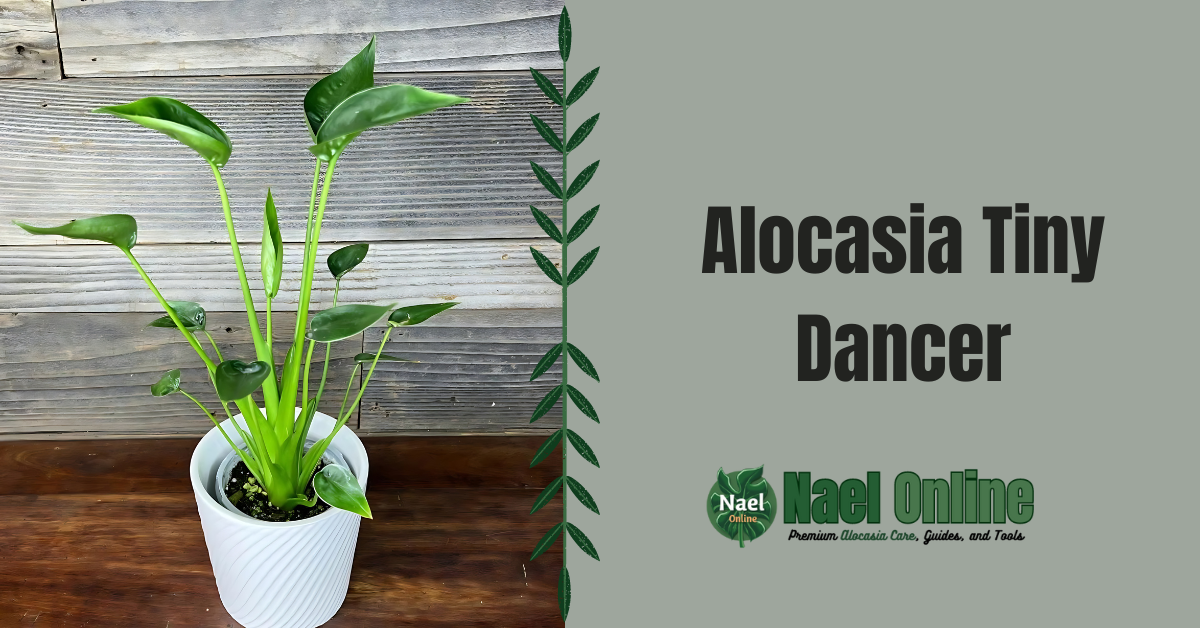
Light Requirements: Finding the Sweet Spot
Alocasia tiny dancer prefers bright, indirect light. In my experience, an east-facing window is ideal. If you’ve got a south or west-facing window, just pop a sheer curtain up to filter the harsh afternoon sun. These little guys can tolerate lower light conditions better than some of their larger Alocasia cousins, but they’ll grow slower and might lose some of their vibrant coloring.
Pro tip: If you notice the leaves getting pale or the stems stretching, your plant’s telling you it needs more light. On the flip side, if you see brown spots or the edges crisp up, it might be getting too much direct sun.
Water: The Goldilocks Zone
When it comes to watering your Alocasia tiny dancer, think “moist, not wet.” These plants like their soil to be consistently lightly moist, but they’ll throw a fit if left sitting in water. I usually water mine when the top inch of soil feels dry to the touch.
In summer, this might mean watering every 5-7 days, while in winter, you can probably get away with watering every 10-14 days. Always check the soil first, though – every plant and environment is different.
Remember, it’s easier to save an underwatered Alocasia tiny dancer than an overwatered one!
Temperature: Keeping It Cozy
Alocasia tiny dancer likes it warm, but not hot. Aim for temperatures between 65-80°F (18-27°C). They can tolerate short periods outside this range, but prolonged exposure to temperatures below 60°F (15°C) can cause damage.
Avoid placing your plant near drafty windows or air conditioning vents. These sudden temperature changes can stress the plant and lead to leaf drop.
Humidity: Embracing the Mist
While Alocasia tiny dancer is more forgiving in terms of humidity compared to some other Alocasias, it still appreciates a bit of moisture in the air. Aim for humidity levels between 50-70%. If you’re struggling to maintain this, try these tricks:
- Use a pebble tray filled with water
- Group it with other humidity-loving plants
- Run a small humidifier nearby
- Mist the leaves occasionally (but not too often, as this can lead to fungal issues)
Soil: The Foundation of Health
Alocasia tiny dancer needs well-draining, airy soil. I’ve had great success with a mix of:
- 2 parts good quality potting soil
- 1 part perlite or pumice
- 1 part orchid bark
This combo provides the perfect balance of moisture retention and drainage. The key is to create a mix that holds some moisture but doesn’t stay waterlogged.
Fertilizer: Feeding Your Tiny Dancer
During the growing season (spring and summer), feed your Alocasia tiny dancer with a balanced, liquid fertilizer once a month. I prefer a 10-10-10 NPK ratio, diluted to half strength. In fall and winter, cut back on fertilizing to once every 6-8 weeks.
Remember, these plants are light feeders. Over-fertilizing can lead to salt buildup and root burn, so when in doubt, err on the side of less.
Now that we’ve covered the basics of Alocasia tiny dancer care, let’s dive into some more advanced topics.
Propagation: Spreading the Tiny Dancer Love
Propagating Alocasia tiny dancer is a bit different from some other houseplants, but with patience and the right technique, you’ll be rewarded with new plants. Here’s how I do it:
1. Division
This is the most reliable method for Alocasia tiny dancer:
- Wait until your plant has produced offsets or has multiple stems.
- Carefully remove the plant from its pot.
- Gently separate the offsets or stems, ensuring each has some roots attached.
- Pot up each division in fresh, well-draining soil.
- Keep the new plants in a warm, humid environment and water sparingly until new growth appears.
2. Rhizome Cuttings
This method is a bit more advanced but can yield multiple new plants:
- Carefully unearth the rhizome (underground stem).
- Cut the rhizome into 2-inch sections, each with at least one growth point.
- Let the cuts callus over for a day.
- Plant the sections horizontally in moist, well-draining soil.
- Keep warm and humid until new growth emerges.
Pruning: Keeping Your Alocasia Tiny Dancer in Shape
Alocasia tiny dancer doesn’t require much pruning, but a little maintenance goes a long way:
- Remove any yellow or damaged leaves at the base with clean, sharp scissors.
- If your plant gets too tall or leggy, you can cut back the main stem to encourage bushier growth.
- Always sterilize your tools before and after pruning to prevent disease spread.
Repotting: Giving Your Alocasia Tiny Dancer Room to Grow
Despite its small size, Alocasia tiny dancer grows relatively quickly and may need repotting every 1-2 years. Here’s my repotting guide:
- Choose a pot 1-2 inches larger in diameter than the current one.
- Use fresh, well-draining potting mix.
- Spring is the best time to repot.
- Water thoroughly after repotting, but hold off on fertilizing for a month to avoid stressing the plant.
- If you want to keep your plant compact, you can root prune and return it to the same pot instead of sizing up.
Toxicity: Keeping Pets and Kids Safe
It’s important to note that Alocasia tiny dancer, like all Alocasias, contains calcium oxalate crystals, which are toxic if ingested. Keep this beauty out of reach of curious pets and children. Symptoms of ingestion can include:
- Oral irritation
- Excessive drooling
- Difficulty swallowing
- Vomiting
If you suspect ingestion, contact your vet or doctor immediately.
Common Pests and Diseases: Staying Vigilant
While Alocasia tiny dancer is generally hardy, it can fall prey to a few pests and diseases:
Pests:
- Spider mites: Look for fine webbing and stippled leaves. Treat with neem oil or insecticidal soap.
- Mealybugs: These white, cottony pests love to hide in leaf axils. Remove with a cotton swab dipped in rubbing alcohol.
- Aphids: Small, soft-bodied insects that cluster on new growth. Blast them off with water or treat with insecticidal soap.
Diseases:
- Root rot: Caused by overwatering. Ensure good drainage and don’t let your plant sit in water.
- Leaf spot: Fungal disease causing brown spots on leaves. Improve air circulation and avoid getting water on the leaves.
Regular inspection and proper care are your best defenses against these issues.
Alocasia Tiny Dancer vs. Other Alocasias: How Does It Stack Up?
While all Alocasias are stunning, Alocasia tiny dancer stands out for its compact size and ease of care. Here’s how it compares to some popular cousins:
- Alocasia Polly: Larger leaves with white veins, more demanding care.
- Alocasia Amazonica: Larger, arrow-shaped leaves, needs more humidity.
- Alocasia Zebrina: Green leaves with zebra-striped stems, taller growth habit.
- Alocasia Black Velvet: Dark, velvety leaves, similar compact size but more finicky.
Where to Buy Alocasia Tiny Dancer
Ready to add this compact cutie to your collection? Check out these options:
- Local nurseries specializing in houseplants
- Online plant shops (be sure to check reviews and shipping policies)
- Plant swaps or trade groups in your area
- Specialty tropical plant nurseries
And don’t forget to grab all your plant care essentials from our shop at https://lexivo.com.ng/shop/!
Alocasia Tiny Dancer Price: What to Expect
Alocasia tiny dancer is becoming more widely available, but prices can still vary. Expect to pay anywhere from $20 to $50 for a well-established plant, depending on size and availability. Smaller plants or cuttings may be available for less.
Remember, investing in a healthy plant from a reputable source is worth it in the long run!
Frequently Asked Questions
Q: Why are my Alocasia tiny dancer leaves turning yellow?
A: This could be due to overwatering, underwatering, or nutrient deficiency. Check your watering routine and soil moisture first.
Q: How often should I clean the leaves of my Alocasia tiny dancer?
A: Gently wipe the leaves with a damp cloth every 2-3 weeks to keep them dust-free and looking their best.
Q: Can Alocasia tiny dancer grow outdoors?
A: In USDA zones 10-11, it can grow outdoors in partial shade. For most of the US, it’s best kept as an indoor plant.
Q: My Alocasia tiny dancer isn’t producing new leaves. What’s wrong?
A: This could be due to insufficient light, nutrients, or it might be entering a dormant phase. Ensure it’s getting enough light and fertilizer during the growing season.
Q: How big will my Alocasia tiny dancer get?
A: In ideal conditions, it typically reaches 12-18 inches tall and wide, maintaining its compact size.
There you have it, folks – everything you need to know about growing and caring for the charming Alocasia tiny dancer. With its compact size and striking foliage, it’s the perfect addition to any plant collection, big or small. Remember to check out our shop at https://lexivo.com.ng/shop/ for all your plant care needs, and happy growing!
